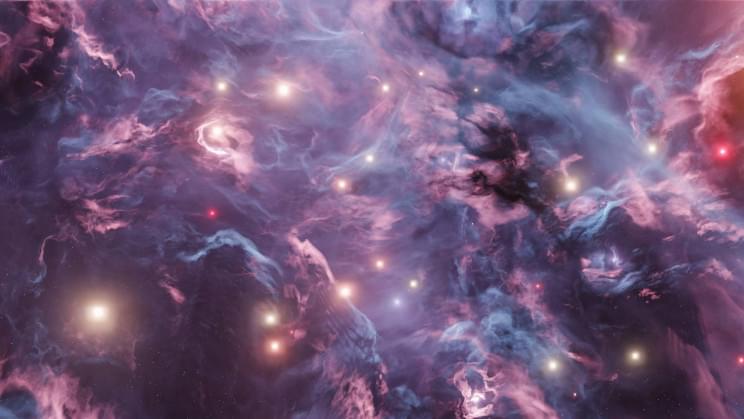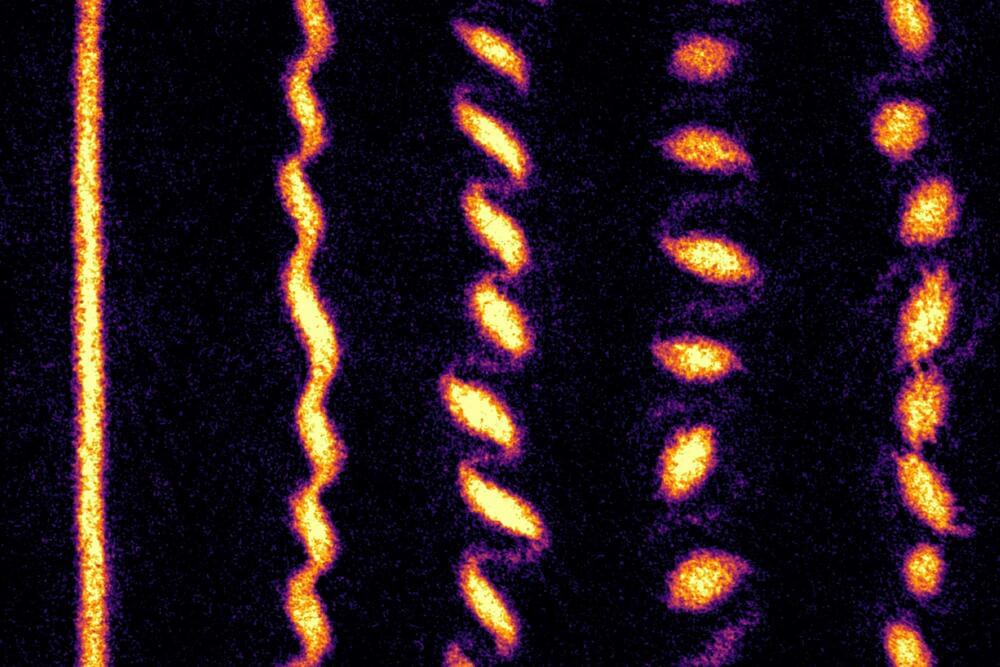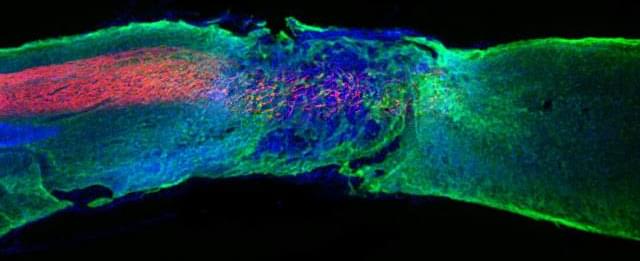Artificial intelligence’s lack of transparency is leading many to fear the technology and others to elevate it to a mysterious god-like figure, but we should be more critical of those making decisions about how AI is used, says anthropologist Beth Singler.
Get the latest international news and world events from around the world.
A New Wave of Space Companies Is Coming. Can It Help Life on Earth?
We’re moving past the bottleneck of available space launches.
The bottleneck nature of space launches is beginning to change.
In the last several years, the unprecedented growth of public-private partnerships has transformed space travel into an irresistible investment opportunity. “Since July last year we’ve had about a dozen millionaires take selfies in space,” said Tess Hatch, a partner with Bessemer Venture Partners (BvP), during a CES 2022 keynote attended by Interesting Engineering.
But there’s more to the budding space economy than tourism, alone. In fact, despite the outsized attention focused on billionaires and millionaires going to space, the vast majority is already going to support a much wider spectrum.
But how will that serve life down here on Earth?
Full Story:

5G is Poised to Change Everything, from Farming to Surgery
With 5G, apps and services that we can’t even imagine will be possible.
What good is a smart toaster if it can’t connect to the network?
CES 2022 is packed with tech that needs lightning-fast connection to the internet. That’s one reason why so many people at the trade show in Las Vegas are laser-focused on 5G. A handful of industry leaders got together at the conference to discuss the opportunities and challenges of making tech that works with the new global wireless standard.
J. David Grossman, VP Regulatory Affairs Consumer Technology Association, led the discussion. He was joined by John Godfrey, senior VP of Public Policy at Samsung Electronics, Inc; Asad Ramzanali, Legislative Director at the Office of Congresswoman Annna Eshoo; Emily Hebein, Legislative Assistant for Representative Bob Latta; and Deanna Kovar VP, Production & Precision Ag Production Systems at John Deere.
The panel discussedhow 5G is expected to transform tech innovation — and how federal, state, and local policy can create the right conditions for success.
Full Story:

Scientists Are Perplexed to Find a Galaxy Without Dark Matter
Could this find contradict years of dark matter theories?
Dark energy and dark matter are believed to make up almost 95% of our universe. We are still unsure about what they are or where they come from but we believe they hold galaxies together with their gravity.
That’s why we were shocked to find out astronomers spotted a perplexing galaxy without the ever-elusive matter, according to Gizmodo. It all began three years ago when Filippo Fraternali, an astronomer at Kapteyn Astronomical Institute of the University of Groningen in the Netherlands, and his colleagues first came across a few diffuse galaxies that looked as though they lacked dark matter.
The researchers decided to examine one of them in detail. They picked one about 250,000 light-years away, called it AGC 114,905, and used the 27 radio telescope antennas of the Very Large Array in New Mexico to study it.
After a detailed investigation, they came to the following conclusion. “The dark matter content that we infer in this galaxy is much, much smaller than what you would expect,” said Fraternali. The find is perplexing, to say the least. But it’s not the first of its kind.
Full Story:

Did aliens genetically engineer humans 780,000 years ago?
The first humans emerged on Earth about 4 million years ago, but new evidence from the study of human evolution has revealed compelling evidence that a small group of these hominins was genetically modified by ancient alien visitors to create the first Homo sapiens.
Researcher and author Daniella Fenton has thoroughly analyzed humanity’s earliest origins and its sudden acceleration in brain development nearly 800,000 years ago, and this research has led to a major revelation.
“Homo sapiens is the creation of ancient astronauts who came through a wormhole in the Pleiades star cluster more than 780,000 years ago.”
The Australian researcher, an expert in equine lineages and gene expression, discovered numerous genetic changes that mark humans as abnormal when compared to modern primate species, some so extreme that they are best explained by advanced genetic engineering.
Full Story:

Sweden Pushes For Real Green Steel
HYBRIT and H2 Green Steel have launched projects in Sweden with a target to manufacture 10 million tonnes (mt) of fossil fuel-free crude (green) steel per year by 2030. Success, of course, depends on the numbers adding up, or rather, the numbers going down.
To make green steel, you need green hydrogen; to make green hydrogen, you need cheap renewable energy. HYBRIT and H2 Green Steel believe this will come from wind power at a LCOE of $30 per megawatt-hour. With the trajectory of costs for renewable energy going ever downward, it is likely they will be able to achieve this.
Add to the mix the increasing costs of carbon and the pressure to decarbonize, and you have a winner. It is expected that a carbon credits will be available to green steel producers of around $85 per ton.

How Hydrogen Could Solve the Energy Crisis: Bloomberg Green
Hydrogen is the simplest element in the universe. And excitement is growing from nations and investors looking to harness its power to make clean, green energy. In this edition of Bloomberg Green, we speak to Australian billionaire Andrew Forrest about his big pivot from dirty coal to clean hydrogen. And Snam CEO Marco Alvera talks to us about his price target for the gas over the next decade. Plus, we break down the difference between gray, blue and green hydrogen, and speak to our BloombergNEF analysts about the possible limitations of the gas.

“Quantum tornadoes” mark crossover from classical to quantum physics
The universe is governed by two sets of seemingly incompatible laws of physics – there’s the classical physics we’re used to on our scale, and the spooky world of quantum physics on the atomic scale. MIT physicists have now observed the moment atoms switch from one to the other, as they form intriguing “quantum tornadoes.”
Things that seem impossible to our everyday understanding of the world are perfectly possible in quantum physics. Particles can essentially exist in multiple places at once, for instance, or tunnel through barriers, or share information across vast distances instantly.
These and other odd phenomena can arise as particles interact with each other, but frustratingly the overarching world of classical physics can interfere and make it hard to study these fragile interactions. One way to amplify quantum effects is to cool atoms right down to a fraction above absolute zero, creating a state of matter called a Bose-Einstein condensate (BEC) that can exhibit quantum properties on a larger, visible scale.

Injectable Gel Reverses Paralysis In Mice With Damaged Spinal Cords
A single injection of a newly developed drug has been shown to reverse paralysis in mice with severe spinal cord injuries. By mimicking the extra-cellular matrix around the spine, the liquified drug promotes the regeneration of severed nerves and the repair of other vital tissues, allowing the rodents to regain the ability to walk within four weeks.
Describing this breakthrough in a new study in the journal Science, researchers explain how they injected synthetic nanofibers into the damaged tissue of mice 24 hours after making a cut in their spinal cords. Consisting of an array of peptides, these nanofibers quickly assemble into a gel around the wound and begin communicating with cells in order to promote healing.